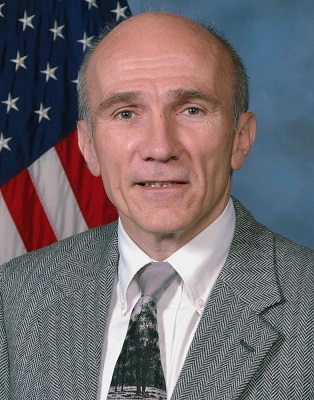An International History of Laser Radar/Lidar
Hosted By: Laser Systems Technical Group
05 May 2021 13:00 - 14:00
Eastern Time (US & Canada) (UTC -05:00)In this webinar hosted by the Laser Systems Technical Group, Paul McManamon (Exciting Technology LLC, University of Dayton) will discuss the history of lidar development around the world. Dr. McManamon lived much of this history starting in the 60’s, shortly after the invention of the laser. Early on, CO2 became popular for coherent laser radar, and NdYag for laser range finders and designators. Laser diodes also became prominent, allowing a reliable and efficient method of pumping. Applications including wind sensing, navigation, terrain mapping, 2D and 3D imaging, and velocity detection then followed. For example, CO2 based navigation laser radar was deployed, but with the advent of GPS has become less popular.
In turn, Dr. McManamon’s talk will discuss direct detection laser radar for range finding, designation, and topographic mapping of Earth and extraterrestrial objects. It will also discuss coherent lidar for wind sensing and for synthetic aperture laser radar development. Putting it all together, this talk will end with a discussion on how lidar is now very prominent for autonomous vehicles, with a competition between ~900 nm and ~1500 nm lidars, and between coherent vs direct detection lidars.
Subject Matter Level:
- Introductory - Assumes little previous knowledge of the topic
What You Will Learn:
- The history of lidar, from even before the invention of the laser
- The role of lidar in autonomous vehicles
Who Should Attend:
- Anyone interested in lidar or its applications
About the Presenter: Paul McManamon, Exciting Technology LLC, University of Dayton
 Dr. Paul F. McManamon is president of Exciting Technology LLC, Technical Director of the Lidar and Optical Communications Institute, LOCI, and chief scientist for Lyteloop, an innovation start up developing data storage using optical photons in motion. He chaired the US National Academy of Sciences, NAS, Study “Laser Radar: Progress and Opportunities in Active Electro-Optical Sensing” (2014), was co-chair of the US NAS study “Optics and Photonics, Essential Technologies for Our Nation” (2012), which recommended a National Photonics Initiative, NPI, and was vice chair of the 2010 NAS study “Seeing Photons: Progress and Limits of Visible and Infrared Sensor Arrays”. He is a Fellow of SPIE, IEEE, OSA, AFRL, DEPs, MSS, and AIAA. He received the IEEE WRG Baker award, was president of SPIE in 2006, and was on the SPIE board for 7 years. He received the Meritorious Presidential Rank Award, and was the co-recipient of the SPIE Presidents’ Award in 2013. He retired from being Chief Scientist for the Air Force Research Lab, AFRL, Sensors Directorate after 40 years of civil service. He was the main LiDAR expert witness for Uber in the lawsuit vs Google/Waymo.
Dr. Paul F. McManamon is president of Exciting Technology LLC, Technical Director of the Lidar and Optical Communications Institute, LOCI, and chief scientist for Lyteloop, an innovation start up developing data storage using optical photons in motion. He chaired the US National Academy of Sciences, NAS, Study “Laser Radar: Progress and Opportunities in Active Electro-Optical Sensing” (2014), was co-chair of the US NAS study “Optics and Photonics, Essential Technologies for Our Nation” (2012), which recommended a National Photonics Initiative, NPI, and was vice chair of the 2010 NAS study “Seeing Photons: Progress and Limits of Visible and Infrared Sensor Arrays”. He is a Fellow of SPIE, IEEE, OSA, AFRL, DEPs, MSS, and AIAA. He received the IEEE WRG Baker award, was president of SPIE in 2006, and was on the SPIE board for 7 years. He received the Meritorious Presidential Rank Award, and was the co-recipient of the SPIE Presidents’ Award in 2013. He retired from being Chief Scientist for the Air Force Research Lab, AFRL, Sensors Directorate after 40 years of civil service. He was the main LiDAR expert witness for Uber in the lawsuit vs Google/Waymo.
